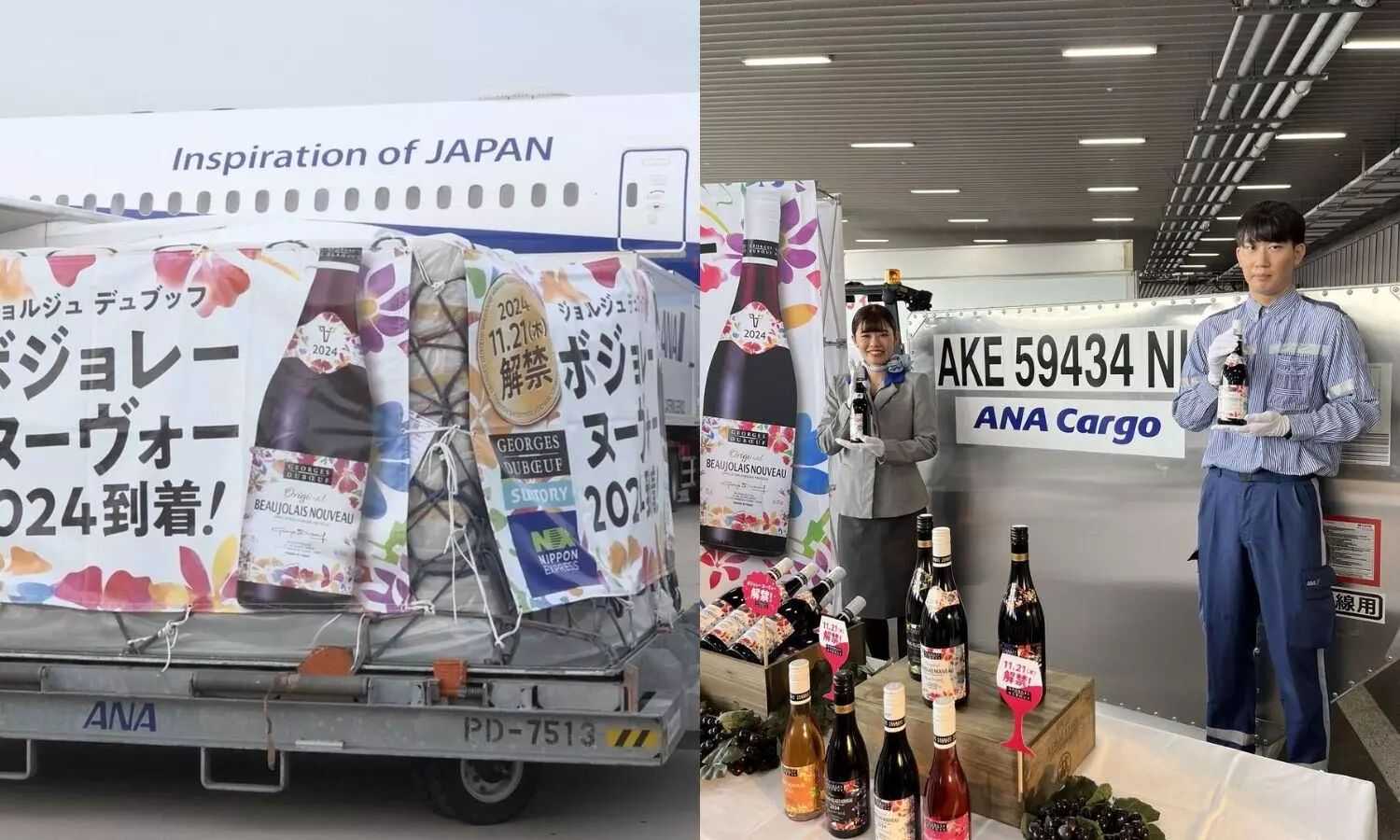
Beaujolais Nouveau: The air freight logistics of world’s fastest wine
To retain freshness, Beaujolais Nouveau must reach consumers quickly, making logistics critical.

Source: ANA Cargo/LinkedIn
Every November, as wine enthusiasts across the world eagerly await the arrival of Beaujolais Nouveau, a complex logistical operation unfolds behind the scenes to bring the “world’s fastest wine” from vineyard to consumer in record time.
Thanks to an expertly orchestrated air freight process, the celebrated French wine reaches over 110 countries within just around 60 days from being picked as grapes, with Asia being a primary recipient of this fresh, vibrant drink. The intricacies of this rapid turnaround reveal a fascinating dance between winemakers, shippers, freight forwarders, and airlines, each playing a vital role in ensuring the wine’s timely arrival.
Dedicated cargo flights from Charles de Gaulle Airport carry thousands of bottles of Beaujolais Nouveau across the globe. Paris became the launchpad for shipments. Asian countries like Japan, South Korea, and Singapore are prime markets for Beaujolais Nouveau, thanks to efficient air freight logistics. Specialised freight deliveries from France ensure the wine reaches shelves at peak freshness, allowing enthusiasts across Asia to enjoy this celebrated wine almost immediately alongside global Beaujolais festivities.
Source: ANA Cargo/LinkedIn
The delivery of the wine relies on a network of specialised freight forwarders, shippers, and airlines that work together to ensure the wine’s timely arrival in international markets each November. Key players include Kintetsu World Express (KWE) France, Nippon Express, DHL Global Forwarding, Bolloré Logistics, and DB Schenker, who handle the meticulous planning, bottling coordination, and customs processes. Major airlines like Air France-KLM Martinair Cargo, Lufthansa Cargo, ANA Cargo, FedEx Express, and Singapore Airlines Cargo provide priority air transport, swiftly carrying Beaujolais Nouveau from French vineyards to destinations worldwide.
The town of Beaujeu
Source: Wikimedia Commons
The journey of Beaujolais Nouveau begins in the Beaujolais region, where handpicked Gamay grapes undergo carbonic maceration – a quick fermentation process that enhances their fruity, vibrant profile. After bottling, a highly coordinated effort between distributors and freight operators ensures wine lovers worldwide can partake in the Beaujolais Nouveau festival almost in tandem with French connoisseurs.
Each November, the town of Beaujeu, namesake of Beaujolais, celebrates with over 120 festivals. Located in the Rhône department of the Auvergne-Rhône-Alpes, it is the historic heart of the Beaujolais wine region. About 400 kilometres southeast of Paris, this quaint town is celebrated for its role in the annual Beaujolais Nouveau festivities each November.
The region’s diverse geology, with over 300 soil types – including granite, schist, limestone, and clay – gives Beaujolais wines their unique flavour. Granite soils, rich in minerals and acidity, are particularly ideal for Gamay, which thrives in Beaujolais’ rolling hills, producing wines that are fruit-forward, expressive, and perfect for immediate enjoyment. This distinct, swift journey from vineyard to table honours both the tradition of Beaujolais Nouveau and its cultural significance around the world.
Georges Duboeuf, known as the king or pope of Beaujolais (Source: Wikimedia Commons)
This lightning-speed journey from vineyard to table has its roots in a marketing masterstroke credited to Georges Duboeuf. Recognising the potential of a young wine released just after harvest, Duboeuf popularised Beaujolais Nouveau globally, providing winemakers with immediate cash flow and transforming the wine into a highly anticipated seasonal sensation. Each November, Beaujolais Nouveau not only brings joy to tables worldwide but also embodies the cultural heritage and pride of the Beaujolais region, uniting wine lovers everywhere in celebration.
Beyond its fresh appeal and festive history, Beaujolais Nouveau represents a strategic triumph in global logistics. With the help of advanced air freight and collaboration across supply chains, this French wine remains accessible to new generations of consumers worldwide, continuing a legacy born centuries ago and revived each November.

